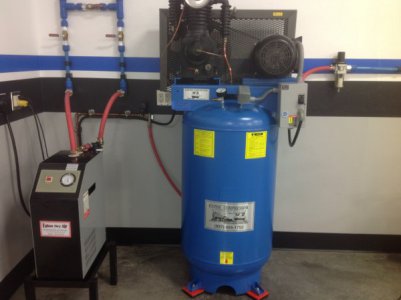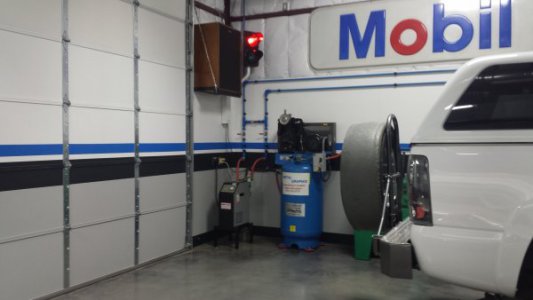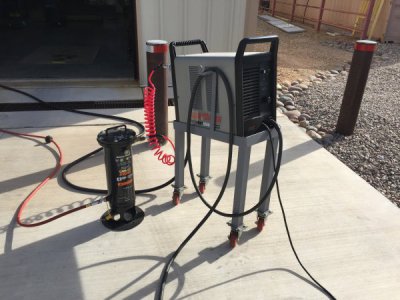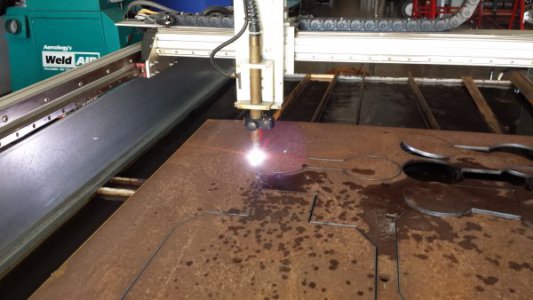Hi Alan,
The pressure vessel has 10#'s of desiccant (in a sock) along with a view port indicating any moisture via color change. I picked this up years ago (eBay) for under $50 new. I used this prior to incorporating a refrigeration dryer into the air system.
I used toilet paper style filters with excellent results in the past, but they required servicing on a frequent basis. The refer system has kept out 100% moisture in the system by itself so this dryer is really not needed indoors. On a warm day when you have airlines on the hot ground the cold air could condensate prior to the plasma. By the same token, hot compressed air (no refer use) inside of air hose lying on the cooler concrete floor (indoors) will result in condensation. This is the most commonly cause of moisture in a shop IMO. That said, managing your hoses makes a big difference.
This is my example of the dryer I use. I normally only run the dryer when operations the CNC plasma table. The bi-pass valves allow me to keep the refrigeration unit offline for general shop work. I don't use it for painting either, only when the compressor is in continuous mode for heave CNC plasm work.
The pre run 30' with auto drains work very well in cooling the hot compressed air prior to delivery.The shops air system is also a looped system.
the compressor tank is also equipped with a auto dump that keeps the tank drained of air. I have it set to dump every 45 min for 2 seconds.

To ensure I don't forget to turn off the switch at the end of the day, a traffic signal is used to remind me to kill the switch. The air dumps though the shops wall keeping it quiet. My last shop didn't have this and would crap my paints

when she bleed off.

Way more information than you asked about Alen, but all pertinent non the less. The consumables on the mechanical torch cost me close to $50 to replace and moisture is the #1 killer of said consumables.
Hope this helps.
Paco




